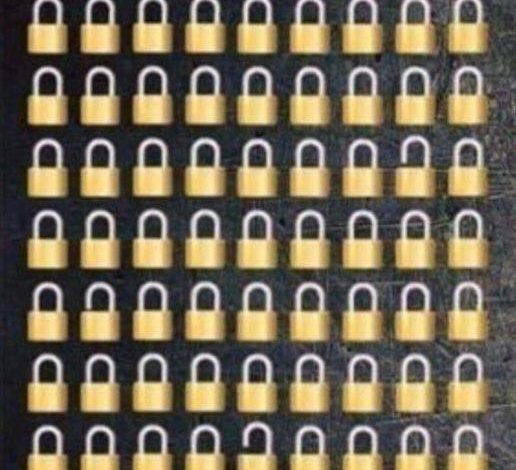
ADVERTISEMENT
The Visual Puzzle: Counting the Open Locks
The image you’ve shared is a visual puzzle that asks the viewer to determine how many locks are open among a grid of padlocks. These kinds of puzzles are designed to test attention to detail and visual perception. At first glance, it may appear that all the locks are the same, but a closer inspection reveals subtle differences between the locked and unlocked padlocks.
How to Approach the Puzzle
- Focus and Attention to Detail: The key to solving this puzzle is carefully examining each lock in the grid. Often, the open locks will look very similar to the closed ones, with the difference being in the position of the shackle (the part of the padlock that opens).
- Systematic Counting: To avoid missing any open locks, it helps to approach the grid systematically. You might start from the top left and work your way across each row, or start at the top and move down each column. This method ensures that you don’t overlook any locks.
- Pattern Recognition: Sometimes, the open locks may follow a particular pattern. Identifying this pattern can make it easier to count the open locks without checking each one individually.
Solving the Puzzle
While I can’t directly interact with images in a way that would allow me to count the open locks for you, I can guide you on how to do it. Start by identifying the characteristic that distinguishes an open lock from a closed one. This might be the angle of the shackle or a slight gap that indicates the lock is open. Once you know what to look for, scan the grid row by row or column by column, and count how many locks match the “open” characteristic.
The Purpose of Visual Puzzles
Visual puzzles like this one serve multiple purposes beyond simple entertainment. They sharpen cognitive skills, improve focus, and can even help train the brain to notice small details that might otherwise go unnoticed. These puzzles can also be a fun way to challenge friends or family, comparing who can find the correct answer the quickest.
Conclusion
This puzzle is a great example of how small differences in visuals can create a challenge for the brain. By taking a methodical approach, you can accurately count the number of open locks and enjoy the satisfaction of solving the puzzle. Whether you solve it quickly or take your time, the process itself is a valuable exercise in attention and pattern recognition.
ADVERTISEMENT



